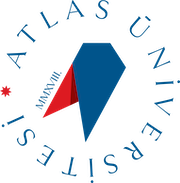| Week |
Subject |
Related Preparation |
| 1) |
Introdicing the course and what is Thinking |
|
| 1) |
Introduction to the course and explanation of the program
Creating groups
Measuring students' critical thinking skill tendencies |
|
| 2) |
Philosophical and scientific thinking |
Reading-research |
| 2) |
Thinking
Ways of Thinking
Thinking process
thinking skills |
|
| 3) |
Definition and importance of critical thinking
Critical thinking tendencies and dimensions
Intellectual standards in the critical thinking process |
|
| 3) |
Analytical Thinking |
Reading-research |
| 4) |
Dialectic, interpretation |
Reading and research |
| 4) |
Critical thinking process
Factors affecting critical thinking
Critical Thinking Process: Case Example |
|
| 5) |
Induction, deduction and inference |
Reading-research |
| 5) |
Critical thinking skills
Using critical skills: Sample article analysis |
|
| 6) |
Analytical reasoning |
Reading-research |
| 6) |
Problem solving skills
Problem solving process
Exercise -scenario |
|
| 7) |
Midterm Exam |
|
| 7) |
Reasoning Process |
Reading-research |
| 8) |
Communication
Communication Process
Communication events
Exercise- scenario |
|
| 8) |
Midterm exam |
|
| 9) |
Group presentations -Critical Thinking Activity I
Article 1, Movie 1 |
|
| 9) |
Claims in logic and their relationships |
Reading-research |
| 10) |
Effective reasoning |
Reading-research |
| 10) |
Evidence
Evidence-based practice
Exercise – scenario |
|
| 11) |
Effective rasoning II |
reading-research |
| 11) |
Group presentations - Critical Thinking Activity II
Free 1, Movie 2 |
|
| 12) |
Reasoning and Analysis |
Reading-research |
| 12) |
Group presentation - Critical Thinking Activity III
Article 2, Book 1 |
|
| 13) |
Group Presentation - Critical Thinking Activity IV
Book 2, Free 2 |
|
| 13) |
Planning and Creating Reasoning |
Reading-research |
| 14) |
Structuring thinking |
Reading-research- |
| 14) |
Group Presentation - Critical Thinking Activity V
Movie 3, Free 3
Closing and Evaluation of the Lesson |
|
| 15) |
Narrating-expressing Thinkings |
Reading-research |
| 16) |
Final exam |
|
| Course Notes / Textbooks: |
1- Allen Matthew, Smart thinking, Oxford Univ Press, Oxford and New York, 2004.
2- Paul Richard, Elder Linda, Kritik Düşünce, Çev Ed. A. Esra Aslan- Gamze Sert, Nobel Akademik Yayıncılık, 2013. |
| References: |
1- Allen Matthew, Smart thinking, Oxford Univ Press, Oxford and New York, 2004.
2- James Webb Young, İyi Bir Fikir Bulma Tekniği, Çev. Ozan Mert ÖZKAN, MediaCat Kitapları, 2009.
3.M. Gare Rubenfeld, Barbara Scheffer. Critical Thinking TACTICS for Nurses 3. Baskı, Jones&Bartlett Learning, 2014, ISBN: 1284066096, 9781284066098
https://books.google.com.tr/books?id=n9qCAwAAQBAJ&dq=critical%20thinking%20nursing&hl=tr&source=gbs_book_other_versions
4. Judith M. Wilkonson. Nursing Process and Critical Thinking, 5. Baskı, Pearson Education, 2011, ISBN: 0132181622, 9780132181624
https://books.google.com.tr/books?id=C7qYcQAACAAJ&dq=critical%20thinking%20nursing&hl=tr&source=gbs_book_other_versions
5. Eileen Gambrill. Critical Thinking in Clinical Practice, John Wiley&Sons, 2012
ISBN: 0470904380, 9780470904381
https://books.google.com.tr/books?id=NsuHtwciwQwC&dq=critical+thinking&hl=tr&source=gbs_navlinks_s
|
| |
Program Outcomes |
Level of Contribution |
| 1) |
Graduates have basic theoretical and applied knowledge about anesthesia. |
|
| 2) |
Graduates have knowledge of the ethical framework related to anesthesia practices. |
|
| 3) |
Graduates use basic theoretical and applied knowledge about anesthesia. |
|
| 4) |
Graduates carry out a given task independently using their basic knowledge of anesthesia applications. |
|
| 5) |
Graduates can critically evaluate their basic knowledge and skills related to anesthesia. |
|
| 6) |
Graduates identify their needs for learning and have the competence to direct their own learning. |
|
| 7) |
Graduates express themselves effectively by communicating both verbal and written by using information and communication technologies related to the field of anesthesia. |
|
| 8) |
Graduates follow the developments in the agenda of the society and the world in the field of health and evaluate them with a sense of social responsibility. |
|
| 9) |
Graduates perform pre- and post-anaesthetic evaluation, pre-application material and drug preparation, and monitoring. |
|
| 10) |
Graduates follow the patient during the anesthesia application. |
|
| 11) |
Graduates know the basic functioning mechanisms of the organs and systems that make up the human organism and the effects and side effects of the drugs used in anesthesia on these systems. |
|
| 12) |
Graduates can evaluate the patient's airway at the end of the surgical intervention and ensure patient safety in all processes. |
|
| 13) |
Graduates know the laws, regulations, legislation and professional ethical rules regarding their duties, rights and responsibilities as Anesthesiologist and act in accordance with these rules. |
|
| 14) |
Graduates are aware of the duties and responsibilities of the anesthesia technician, have sufficient knowledge and skills, keep patient caregivers and people at the forefront, can perform active teamwork together with effective communication, and aim to constantly learn and improve the consumed information. |
|
 BİLGİ PAKETİ / DERS KATALOĞU
BİLGİ PAKETİ / DERS KATALOĞU
